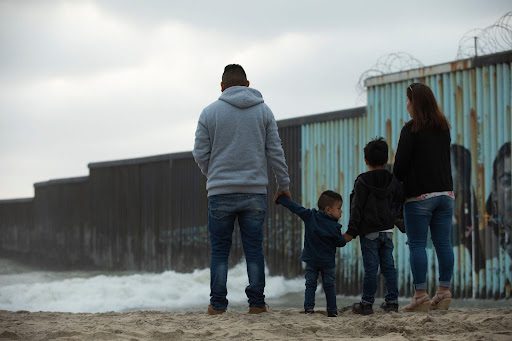Moving to a new country is, in itself, a major life change. But adjusting to a new culture, language, and setting is further impacted when such a move is brought on by an urgent, and at times life-threatening, necessity. Such is the case for the millions undocumented immigrants, refugees, and other displaced individuals across the globe, who have uprooted themselves from their homeland in the hope of making a better life for themselves and their loved ones.
Their journey, however, often includes physical, emotional, and financial hardships, which build up on one another. The following article aims to describe the mental health issues that more commonly arise due to the realities faced by undocumented immigrants and refugees. Read on to find out more about the complex issues that can affect their well-being.

The journey of many refugees and other displaced individuals tends to include periods of preflight, flight, and resettlement. They also often face a serious threat of violence in their country of origin, which had initially caused them to seek security elsewhere. Labor or sexual exploitation, contact with military populations, prolonged detainment in internment camps, the separation of children from their parents, and a loss of community or language are also common experiences for refugees the world over. On a more positive note, research has also shown that refugees who settle in places where they feel a sense of security are generally able to adjust well to their new surroundings.
According to the World Health Organization (WHO), at present there are roughly 272 million migrant individuals who have left their homes across the globe. Within this larger population, more specific groups of migrants have gained attention:
The following mental health conditions have been shown to appear at a higher rate among undocumented immigrants and the displaced:

For individuals and families fleeing their homes, arriving at a safe harbor does not necessarily translate into receiving proper care and support. This is particularly true in regard to mental healthcare. When seeking treatment for their mental health, refugees undocumented immigrants, and others experiencing displacement often face the following impediments, even after they manage to escape persecution:
Lack of Funding. Reacting to an emergency so extreme it would propel you to escape your country with little-to-no planning can create a reality of severe poverty for refugees on the run. Even those who do manage to take with them a certain amount of savings or valuables would first need to secure the immediate, physical demands of their new life, with their mental healthcare viewed as an issue that may need to be postponed, until they are back on their feet.
Lack of Mental Health Care for Illegal Immigrants. Global initiatives, charities, and the governments of countries who accept refugees do not divert the same amount of resources to the mental health of displaced individuals as they do to the mental health of their citizens. As a result, the mental health of displaced immigrants and refugees continues to suffer, as they try to balance the emotional, financial, and physical demands of their present lives.
Scarcity of Treatment in Their Mother Tongue. A further obstacle for many undocumented and legal immigrants is their inability to fluently speak the language. Describing the turmoil, trauma, and stressors they have gone through frequently requires a nuanced knowledge of the language used both with a psychotherapist, and a doctor trying to understand any psychiatric symptoms from which they are suffering. Having a rudimentary grasp of the commonly spoken language in their new place of living, if any, makes it exceedingly more challenging to find a therapeutic setting in which they would be able to properly express themselves, and work through their pain.
Compacted Vulnerability of Sub-Populations. Certain groups within the refugees and the displaced populations are particularly vulnerable to abuse, ill-treatment, and as a result—to developing mental health issues. These include children, the elderly, those contending with a physical disability, and members of the LGBTQ community.
The WHO has highlighted certain steps governments can take to more comprehensively address the mental health needs of displaced individuals. These include: